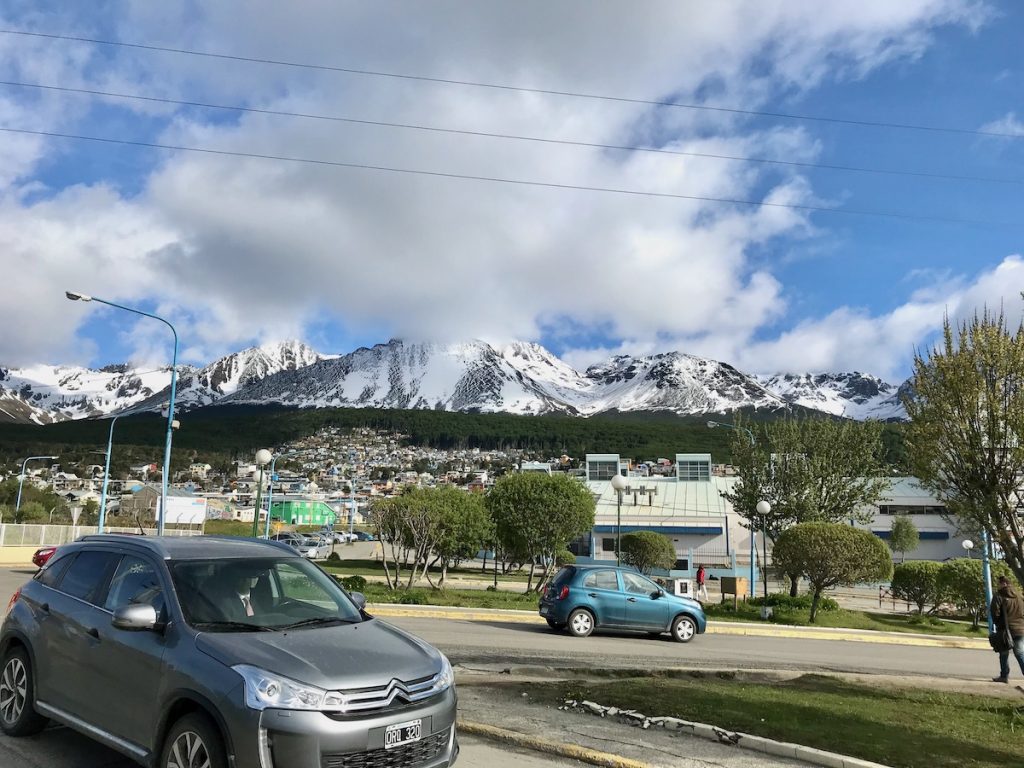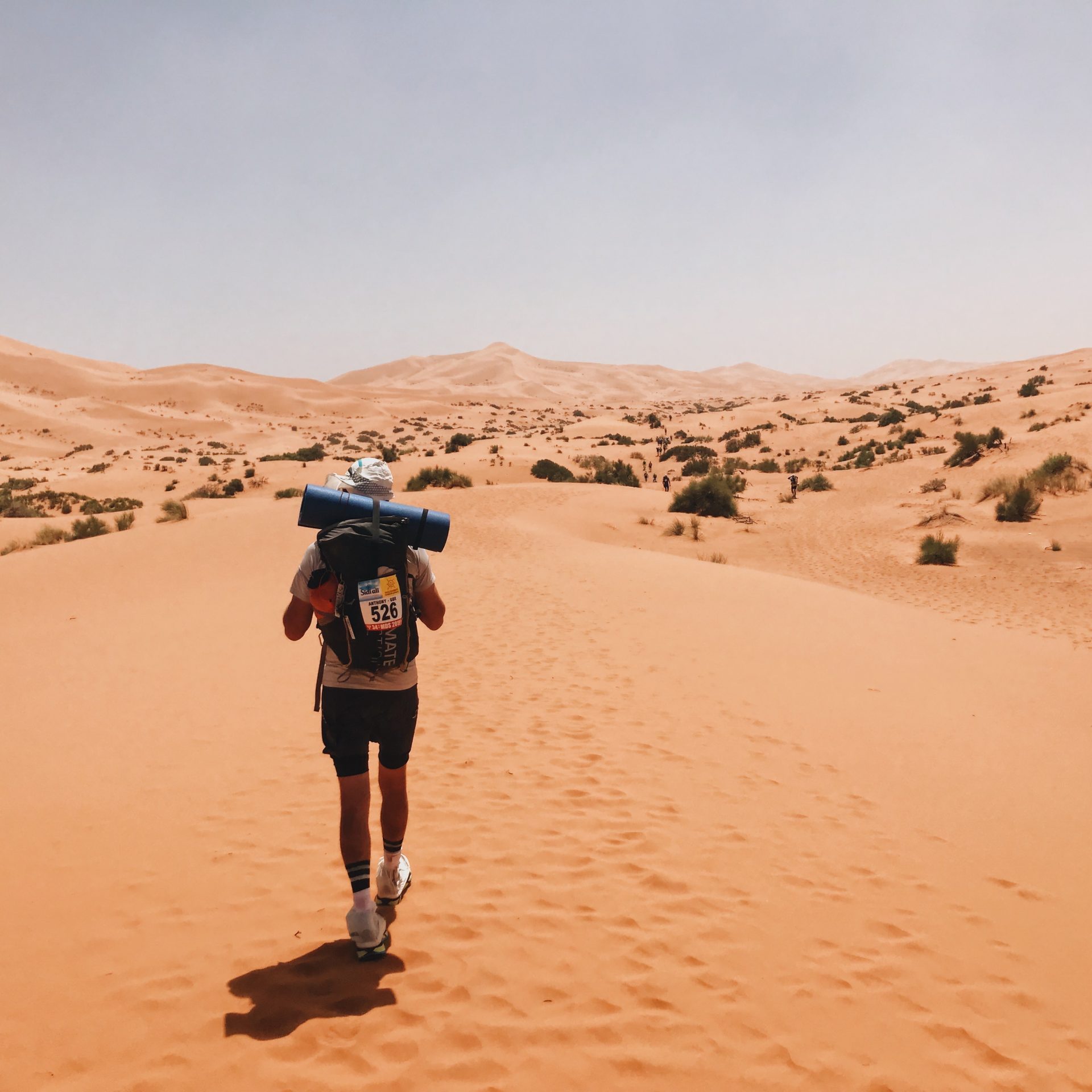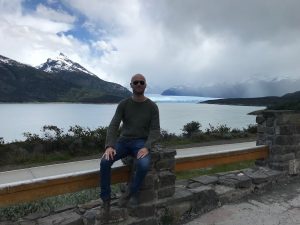Looking for the best things to do in Ushuaia, the southernmost city in the world?
Often one of the final locations on a Patagonia itinerary, the city has become popular for explorers traversing the vast distances of South America as well as a handy jumping-off point for visits to Antarctica.
Ushuaia is not a mere footnote and middleman of travel but a city worth visiting and exploring for its own sake. Things to do in Ushuaia range from enjoying the novelty of such an isolated town, taking in the nature of southern Patagonia, diving into the history of one of the southern hemispheres’ final frontiers, and so much more.
So let’s jump into the city at the end of the world and shine a light on the best things to do in Ushuaia.
Fun Things To Do in Ushuaia
From experiencing the extensive wildlife, getting stuck into adrenaline-inducing activities (if that’s your cup of tea) and soaking up the Patagonian culture with a nice dash of cheesy memorabilia to remember your visit, this diminutive little bragging city has earned its underground fame in the travel world.
So let’s take a look at the mammoth twenty-three best things to do in Ushuaia while you are there.
1. Visit The Penguins of Isla Martillo
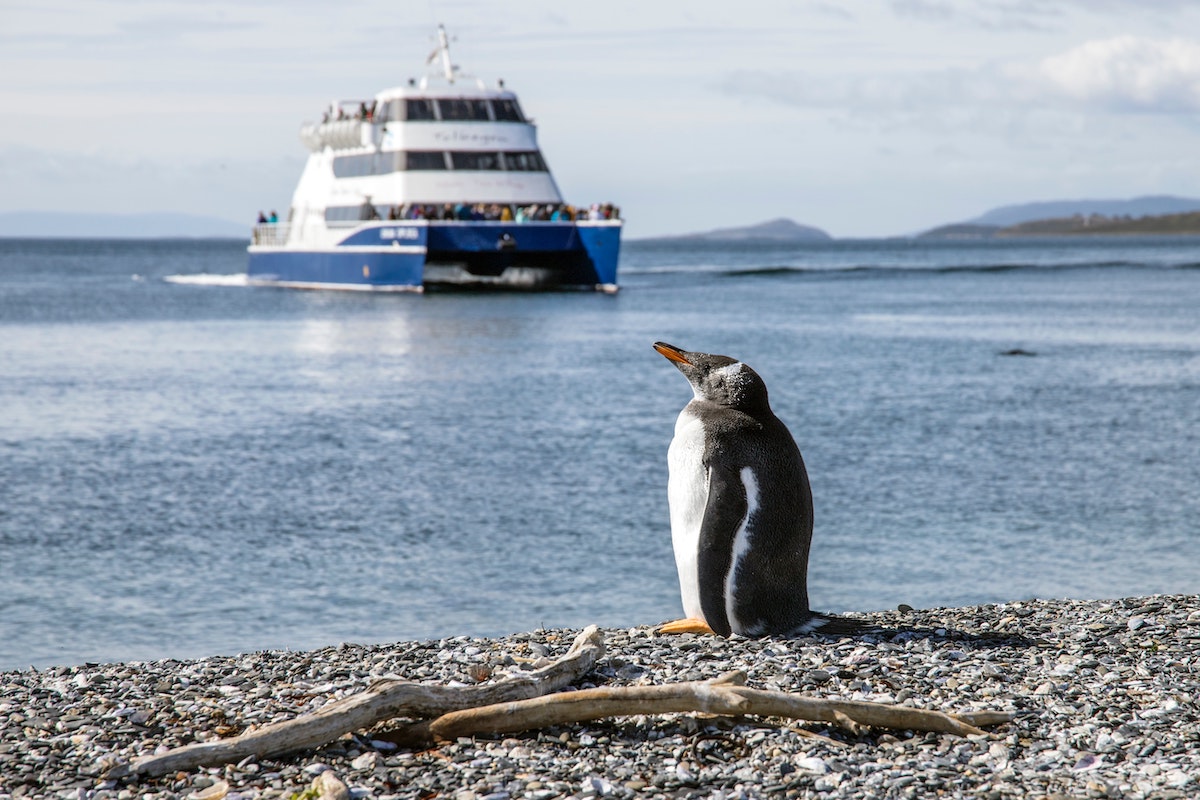
Forty-six miles east of Ushuaia is the small island of Isla Martillo, one of the most iconic locations not only in the Ushuaia area but in all of Patagonia. What makes this island so special is the fact that it is home to a huge colony of Magellanic and Gentoo penguins; an icon of Patagonia and southern South America.
One of the best times to visit the island is between September and April when the penguins are raising their newly hatched chicks – a once-in-a-lifetime sight. Aside from the penguins, the island is also a fantastic place to see sea lions and a variety of beards native to the region.
Those with shared concerns over animal welfare will also be pleased to hear how the tours are conducted on the island; tour groups will only run two-hour-long trips to the island in one day to avoid any interference with the natural way of things and so as to not stress the birds out.
Know before you go:
- Location – Isla Martillo is located 46 miles east of Ushuaia, in the Beagle Channel.
- Cost – Tours will cost around AR$9,600
- Opening hours – Tours usually begin in the morning, giving you enough time to get there and enjoy the penguins.
- Time needed – All in all, the day will last around five hours, including travel times.
- Getting there – The best way to see the penguins on Isla Martillo is to join a tour from Ushuaia, where you will take a bus and then a boat to the island. Usually, this includes complimentary pick-up from your accommodation.
2. Take a Photo at the “End of The World” (Bahía Lapataia)

Around ten or so miles west of Ushuaia is a point known as the official “End of the World”, Bahía Lapataia. Lapataia Bay, as it is known in English, is a coastal location of extreme natural beauty.
However, perhaps more importantly to visitors and those who like to tick things off this nerdy item on their bucket list, it is the final stop along the longest motorable road in the world, a road that runs 29,800 miles from Prudhoe Bay in northern Alaska to this point.
Unsurprisingly, visiting Bahía Lapataia and the end of the world is one of the more popular things to do in Ushuaia and grabbing a photo to prove you’ve stood here is the general unspoken rule. Located within Tierra del Fuego National Park, you will need to pay an entrance fee to get here, though it’s ideal to combine a visit here with an exploration of the national park too.
Know before you go:
- Location – Bahía Lapataia can be found around ten miles west of the town.
- Cost – Tours to the national park, including a visit to Bahía Lapataia, start from AR$560 per person.
- Opening hours – Tierra del Fuego National Park usually opens from 8 am to 9 pm, but tours tend to arrive sometime in the morning.
- Time needed – If you are simply heading in for a photo opportunity, you will only need around 40 mins. However, I’d highly recommend staying for at least half a day to enjoy the park.
- Getting there – Buses from Ushuaia to the entrance of the national park leave from the centre of town every hour. If you’re joining a tour, they will either pick you up from your accommodation or let you know exactly where to meet them.
3. Cerro Castor Ski Resort
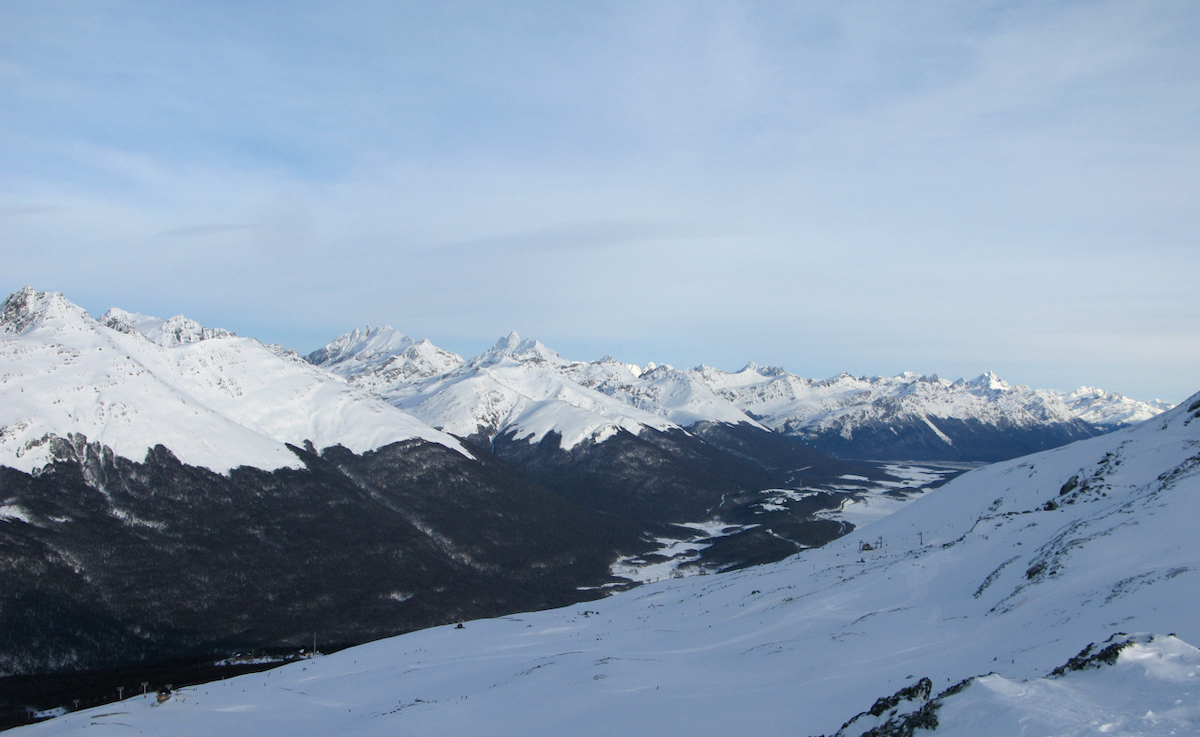
A half an hour’s drive into the hills and mountains north of Ushuaia will bring you to Cerro Castor Ski Resort. Skiing is one of the most popular things to do in Ushuaia when it comes to sporting activities and the surrounding slopes provide some of the most stunning skiing locations in South America.
The winter sports area of Cerro Castor Ski Resort is situated between elevations 195 and 1,057 meters and allows you to either ski or snowboard down the snowy white slopes. With eighteen miles worth of slopes and eight lifts to transport you up the slopes, it is a haven for winter sports.
The official trail breakdown is 30% beginner, 30% intermediate, 25% advanced and 15% expert, making it popular with skiers and snowboarders who have not had too much experience in the sport. Even if the call of the slopes isn’t your thing, visiting here with a group can be an enjoyable pastime; taking in the stunning scenery, dining at the onsite restaurant and hiking around the timberlands of the hills is divine.
I opted to not ski and went for a solid hike in snowshoes. The experience was very similar to climbing Mount Kosciuszko in winter; slogging about in the snow, clambering to get ahead and taking in the beauty every time I stopped to get my breath back.
Know before you go:
- Location – The ski resort is located around sixteen miles northeast of Ushuaia.
- Cost – AR$ 5050 for a day entry ticket to the resort.
- Opening hours – You can visit between the hours of 10 am and 4 pm.
- Time needed – It’s worthwhile spending a good few hours on the slopes or even a full day.
- Getting there – Grabbing a local taxi is the quickest and most efficient way of getting to the ski resort.
4. Beer At Almacen Ramos Generales
After you’ve spent the stay streaming down the slopes of Cerro Castor, you will have definitely earned yourself a beer or two, and what better place to sip a few than the historic epicentre of Ushuaia’s social scene, the Almacen Ramos Generales?
Known in English as General Ramos Warehouse, Almacen Ramos Generales was founded in 1913 by an entrepreneurial immigrant known as Don José Salomón. For many years, Almacen Ramos Generales was the meeting place in the town, a tradition that has continued to this day.
Selling a range of craft beers, including red beers, stouts and pilsners, Almacen Ramos Generales is the ideal setting to enjoy a satisfying drink surrounded by cosy interiors and a slice of Ushuaia history.
Know before you go:
- Location – Almacen Ramos Generales is located in the southeast of the city, facing the Beagle Channel along Maipú Avenue.
- Cost – Drinks and food cover a huge price range but start from as little as AR$2.
- Opening hours – 9 am – 12 am.
- Time needed – A good couple of hours to relax and enjoy a few beers.
- Getting there – Almacen Ramos Generales is walkable from most of the city’s accommodations.
5. Hike To The Laguna Esmeralda
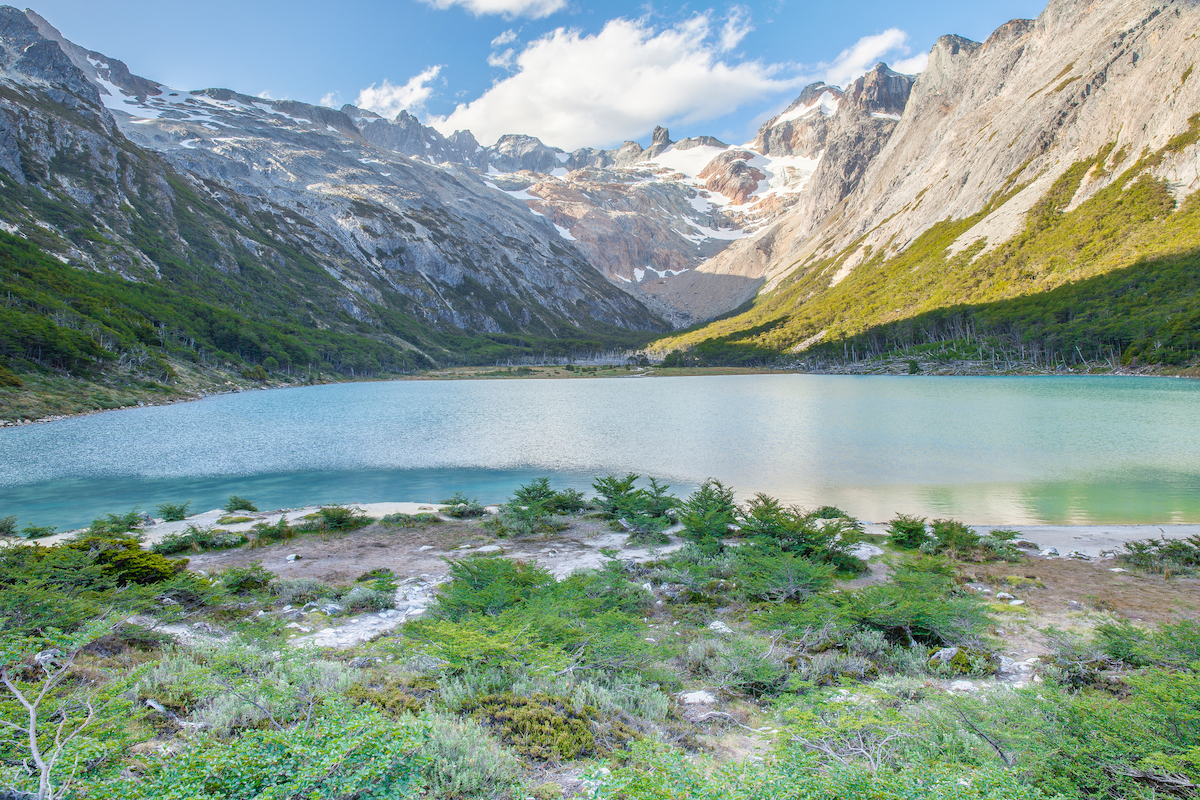
Twelve miles east of Ushuaia is the stunningly beautiful Laguna Esmeralda, a glacier lake surrounded by the rolling hills of Tierra del Fuego. Hiking to the Laguna Esmeralda is one of the most rewarding things to do in Ushuaia and, surprisingly, one of the easiest, making it an attractive hike for those with not-so-great fitness levels.
The trail to Laguna Esmeralda can be accessed by hiking through a lenga forest and then along with the peat moss. Although the trail has a very small ascent, making it one of the less strenuous hikes in the area, the moss and mud can be a little tricky during wetter weather.
Begin your adventure at the Valle de Los Lobos, along Ruta 3, where you will see a car park and a blue sign pointing to the trail. The trail then winds through beautiful forests for around forty minutes until you reach the river.
Passing through another set of woodlands, you will then have to cross the most tricky part of the hike, the peat moss. There is no distinctive trail through this part, so you’ll have to just trudge on the best you can, and follow any others ahead of you.
After a little elevation, the jaw-dropping valley will open up before you and Laguna Esmeralda reveals itself in all its glory. This hike is really the perfect balance of low effort and huge rewards – you may even catch sight of foxes that live in the woodlands along the trail.
Know before you go:
- Location – The trail beings ten miles east of the city centre, just off Ruta 3.
- Cost – Free.
- Opening hours – 24 hours.
- Time needed – Around three hours should be enough to walk there and back, with some time to soak up the view while you’re there.
- Getting there – Take a short taxi ride to the east of the city to save your legs before the hike.
6. Estancia Harberton
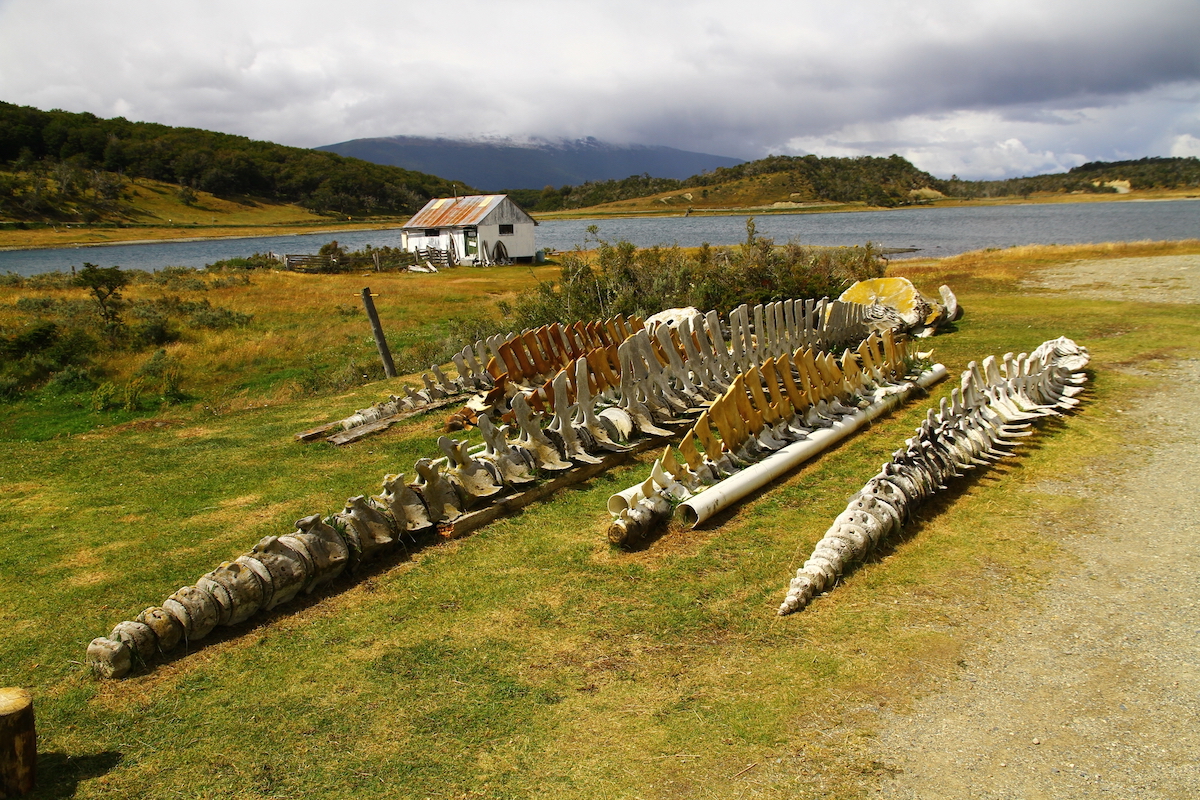
Although the city of Ushuaia is now a huge settlement where thousands live and visit, it was once a humble village and mission, created by religious settlers from Britain. Much of this identity has faded away but for one preserved estancia. or homestead, forty-nine miles down the coast.
First settled in 1886 by Anglican missionary pioneer Thomas Bridges, the homestead was named Harberton after the Devonshire village where his wife was born. Bridges were the first author of the first Yahgan to English dictionary after learning the native language of the Tierra del Fuego island.
Estancia Harberton still stands today and is run by Tommy Goodall, pioneer Thomas Bridges’ fourth great-grandson. The homestead looks much as it did in the 1880s, with red-roofed buildings along the sheltered bay. Many of these look like English cottages, with only the huge whale bones that surround the gates showing you where you are in the world.
Estancia Harberton is a time capsule of life led by the region’s first settlers and their influence on Ushuaia. A tour of the farmstead will take you back down the centuries, and a visit to the nearby Museo Acatushún, opened by Natalie Prosser Goodall, a North American biologist who married into the extended Bridges family, will highlight the extensive natural history of the area.
Know before you go:
- Location – Estancia Harberton is 49 miles east of Ushuaia.
- Cost – Tours to Estancia Harberton start from AR$3,000
- Opening hours – Tours usually depart around 10 am.
- Time needed – Each tour lasts for around three hours, plus a couple more hours for travel and lunch.
- Getting there – You won’t need to worry too much about transport, as most tours will pick you up from your hotel.
7. Lake Escondido
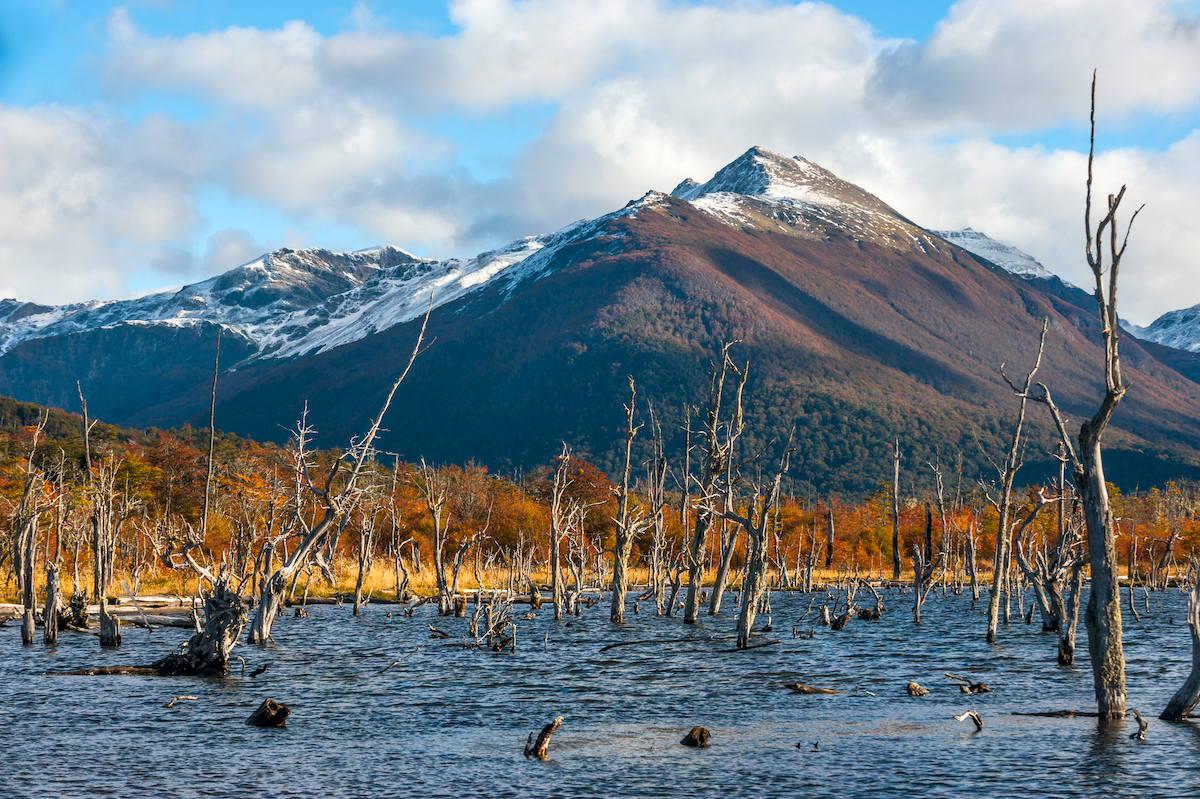
An hour’s drive north of Ushuaia is the beautiful Lake Escondido, one of the most picturesque bodies of water in the region. The road leading out of the city passes a landscape of deciduous beech forests, beaver dams and peat bogs before reaching the foot of the Garibaldi mountain pass.
The lake itself is a fantastic place for a spot of fishing or simply to hike around the stunning scenery. Take a wander around the lake’s hills, which provides even more scenic spots and adventure opportunities. You can either venture up to Lake Escondido under your own steam and stay amongst their camping sites or join a full day’s tour with local tour guides.
Know before you go:
- Location – Lake Escondido is 31 miles northeast of Ushuaia.
- Cost – Tours can range from AR$5,000 – AR$8,000, depending on the package you choose.
- Opening hours – 24 hours
- Time needed – Take around five hours to visit and see the sites around the lake.
- Getting there – Either join a tour or make your own way there using local transport.
8. Convict Train (Tren Fin Del Mundo)
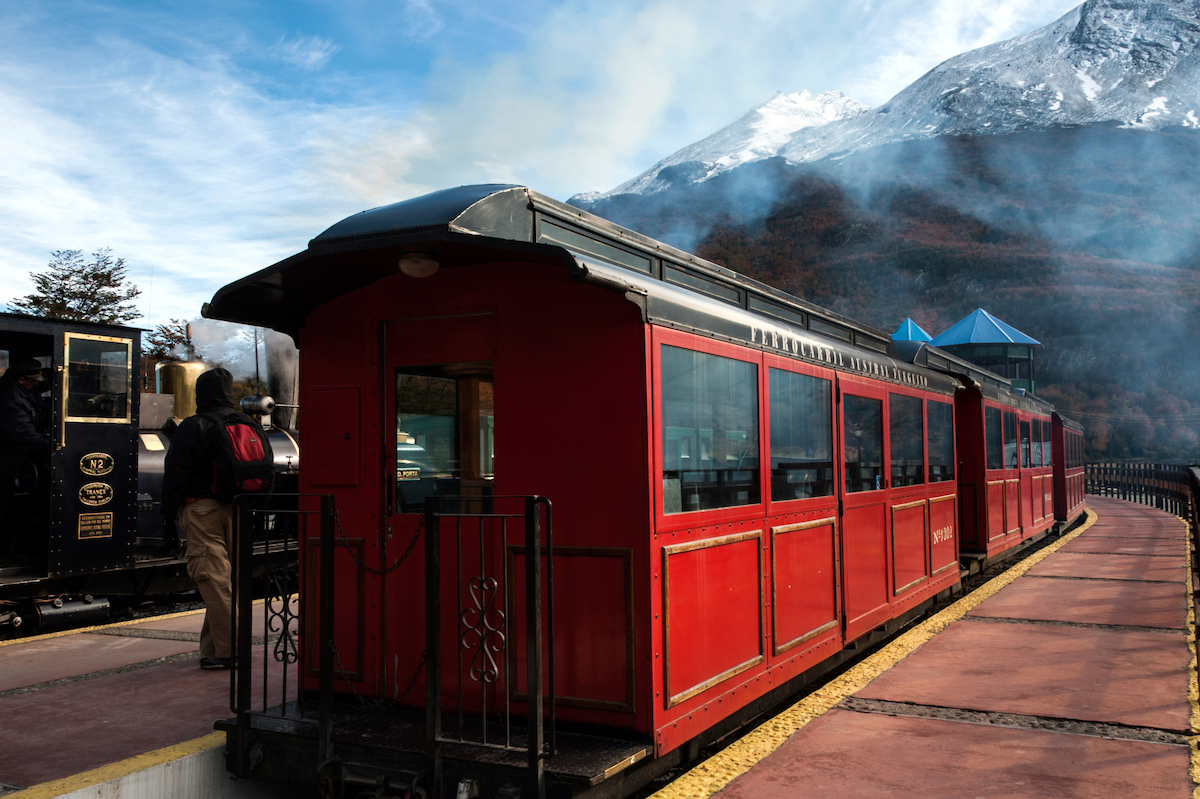
Much of Ushuaia was first constructed as a penal colony, and its infrastructure was built by the criminals that called it home. The main method of transporting the resources here was via rail and the railway that is now known as the Tren Fin Del Mundo was born.
Built deep within the woods, the railway was extended over time as the need for more timber to build even more buildings was needed. After the prison closed in 1947 and the 1949 Tierra del Fuego earthquake blocked much of the line, it was left to ruin.
It wasn’t until the mid-1990s that the railway was reopened as a tourist railway, with a larger gauge rail and far more luxury than would ever be experienced by the convicts.
You can ride with fellow passengers along the Pico Valley in the Toro Gorge and to Cascada de la Macarena station. Stops along the way include a visit to a reconstructed Yahgan village and the Macarena waterfalls.
Travelling along the railway is a truly impressive experience for numerous reasons. First off, you have the bragging rights of saying that you have travelled along the railway at the very end of the earth, something that travellers and railway enthusiasts would give their right arm to do.
Secondly, the sheer beauty of the railway’s surroundings makes this one of the most rewarding journeys you can take via railway. Finally, journeying along this railway allows you to understand the beginnings of Ushuaia and how it has evolved throughout the centuries.
Know before you go:
- Location – The beginning of the railway starts just five miles west of the town.
- Cost – A ticket for the tourist class costs AR$1,800, Primera Superior class costs AR$3,600 and Premium Class will set you back around AR$4,200.
- Opening hours – 9 am – 5 pm.
- Time needed – It’s best to set aside the whole day to experience the railway journey.
- Getting there – You can join a tour to the railway, but it’s just as easy to flag down a taxi and head there on your own steam.
9. Faro Les Eclaireurs (Lighthouse at The End of The World)
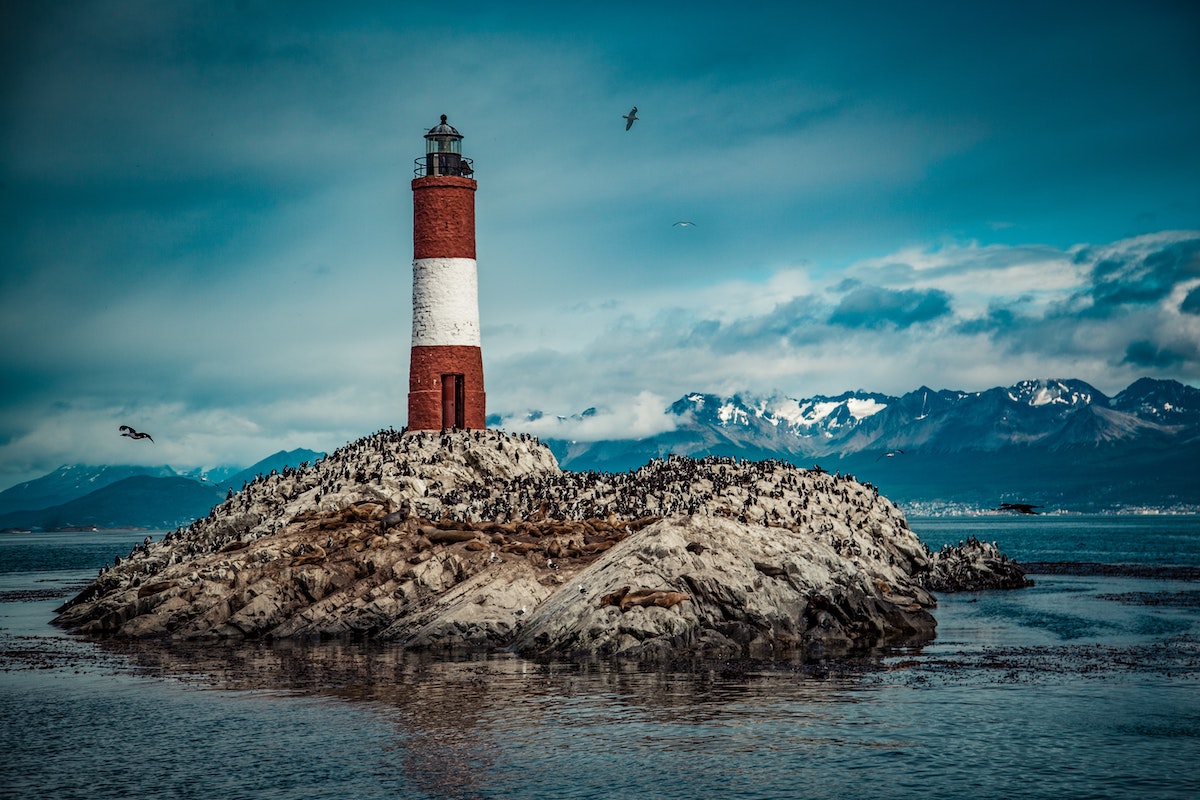
Finding yourself at this point on the globe, it may come as no surprise that many of Ushuaia’s main landmarks and sights boast to be the ones that are at ‘the end of the world’. And yet, when it comes to navigating the end of the world, a lighthouse is most important, especially around the infamous Cape Horn – one of the most hostile sections of the sea in the world.
Built in 1920, The most famous lighthouse in this region is e Faro Les Eclaireurs, a slightly conically shaped lighthouse standing on an island out in the Beagle Channel. Just over five miles east of Ushuaia, the lighthouse has remained one of the more iconic symbols of naval navigation for South America for a century and visiting such a landmark is one of the more unique things to do in Ushuaia.
Know before you go:
- Location – Faro Les Eclaireurs is located to the east of Ushuaia in the Beagle Channel.
- Cost – Tours start from AR$5,000 per person and usually include a few different rights along the Beagle Channel.
- Opening hours – 24 hours
- Time needed – The boat journey and tour will take a couple of hours from Ushuaia.
- Getting there – Most tours will pick you up from your accommodation in town.
10. Wildlife Spotting on The Beagle Channel
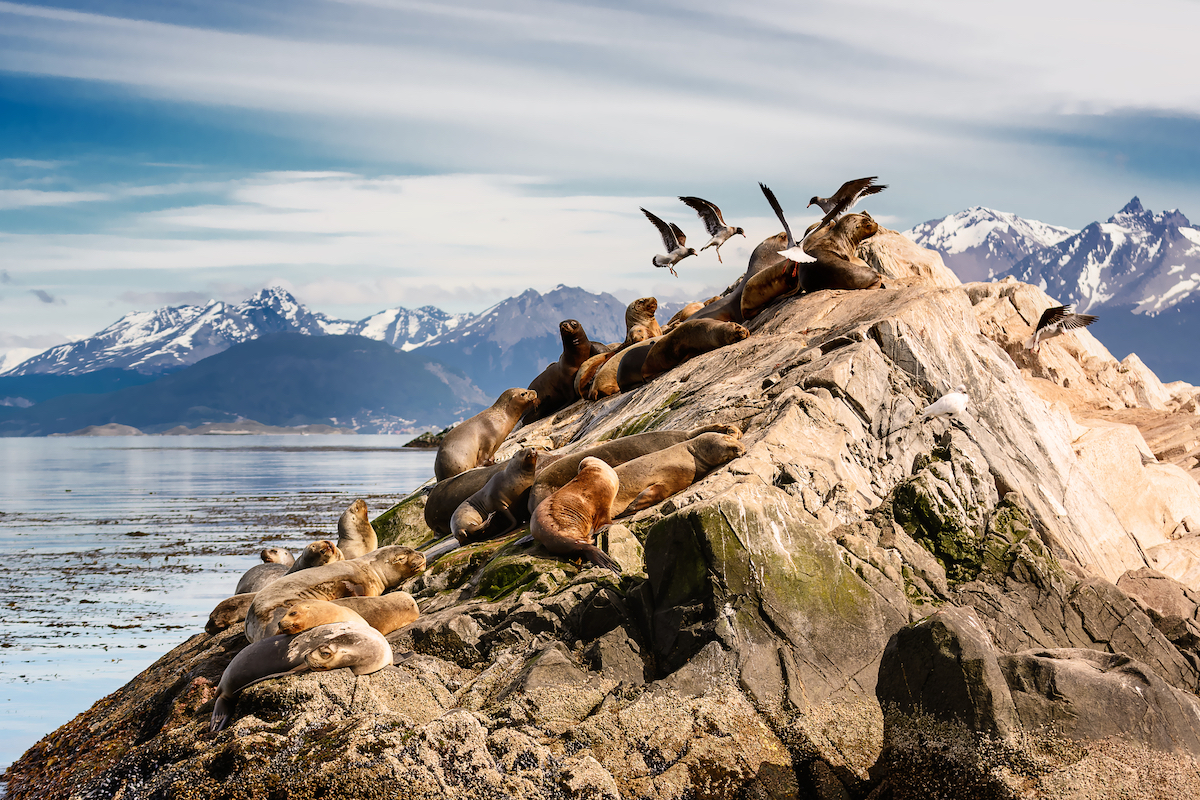
The Beagle Channel that runs south along Ushuaia has long been a haven for wildlife watching. The HMS Beagle, after which the channel is named, carried the famous naturalist Charles Darwin around the world and actually inspired the writing of “The Voyage of the Beagle” and his future work on the theory of evolution.
The best way to experience the channel’s extensive wildlife is to join a full-day tour, which lasts for around eight hours. Travelling on a spacious boat, you’ll leave the port of Ushuaia in the early morning and head out into the channel, the first destination being the Les Eclerairs Islets, otherwise known as Bird Island. Here you can catch sight of a large colony of Sea Lions and Fur Seals who call the rocks home.
Aside from these fascinating mammals, these rocks are also home to rookeries of several native birds. These include the Imperial Cormorant, Chilean Skua, Kelp Gull and South American Tern. Circling the rocks, you will have a chance to see these animals from every angle and capture some great photos too.
Sailing further east, you’ll head into the realms of Peale’s Dolphins, whose colours make them look like mini killer whales. After even more bird sightings, including the chance to catch a glimpse of the Back-browed Albatross, Southern Giant Petrel and Magellanic Diving-Petrel, most tours will give you a little background of the shipwreck history of the area too.
With so many animals to see, the day is jam-packed with sightings and is one of the top things to do in Ushuaia if you are a fan of wildlife.
Know before you go:
- Location – The Beagle Channel runs south of Ushuaia, with the city looking out onto the channel.
- Cost – Half-day tours start from AR$ 6,000, but exact prices will vary depending on your chosen package.
- Opening hours – Most tours begin in the early morning hours, around 8 am. Half tours end around midday whereas full-day tours continue through to 4 pm.
- Time needed – Full-day tours will last for most of the day, running for around 8 hours.
- Getting there – As part of a tour, your guide will pick you up from your accommodation.
11. Parque Nacional Tierra del Fuego
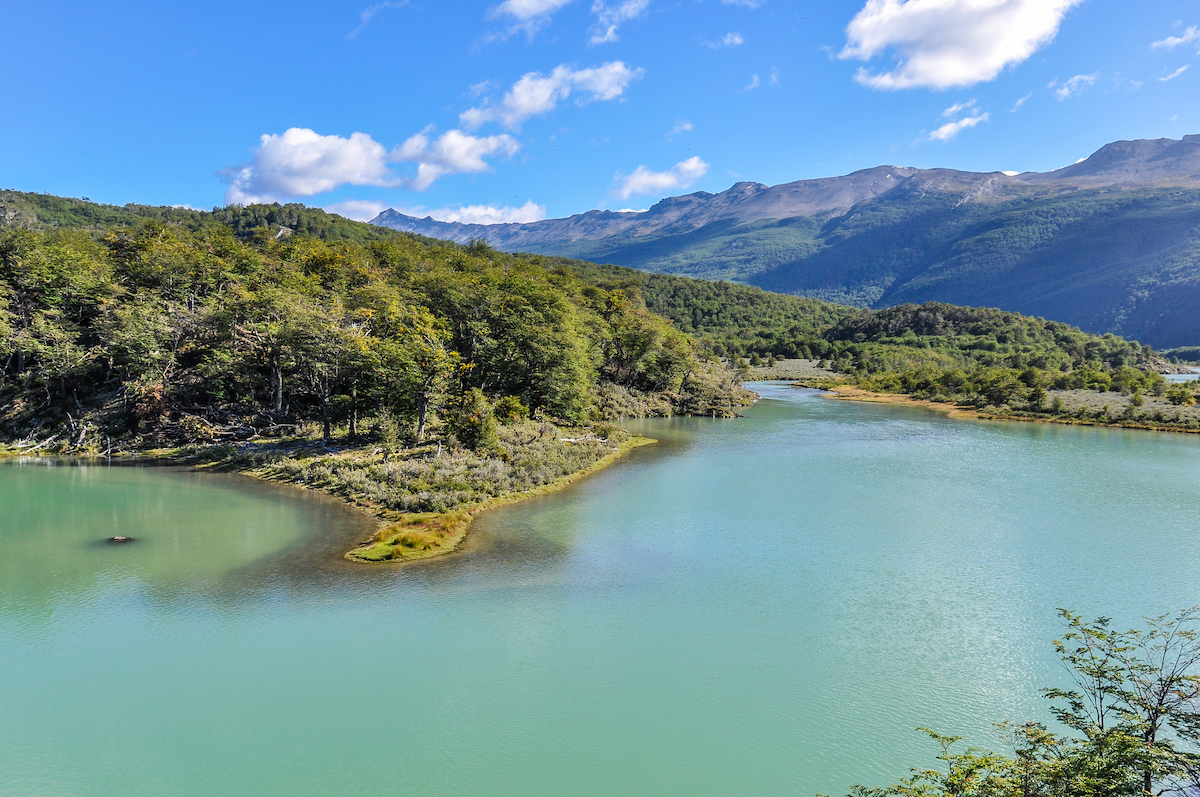
Parque Nacional Tierra del Fuego or in English, Tierra del Fuego National Park, is 243 square miles of protected forests, famous for its biological richness. Encompassing lakes, bogs and numerous examples of unique wildlife visiting the national park is a great way to immerse yourself in the nature of southern Patagonia.
You can walk along the trails that cut through the park, either with a guided tour or on your own. The visitors centre that forms the entrance of the park is where you will need to pay your entrance fee and where you’ll find all of the information you need to plan your visit.
Parque Nacional Tierra del Fuego is home to breathtaking beauty, with ancient forests, expansive lakes and fascinating nature all coming together to make it a stunning place to explore.
You can decide how long you wish to stay in the park, whether it is a short hour or so walk, a whole day of exploration or even camp within the park itself. Once you pay the entrance fee you are allowed to camp inside the permitted camping areas for up to 48 hours, but remember to bring everything you will need as there are no shops or supplies within the park.
Know before you go:
- Location – Parque Nacional Tierra del Fuego is located 12 miles west of Ushuaia.
- Cost – Entrance to the park will cost you AR$ 560.
- Opening hours – Tierra del Fuego National Park usually opens from 8 am to 9 pm but opening times can differ during the winter and summer months.
- Time needed – Depending on what you are doing in the park, visits can last a couple of hours or even 48 hours.
- Getting there – Buses leave from the centre of Ushuaia to the entrance of the national park every hour.
12. Hike Glaciar Martial
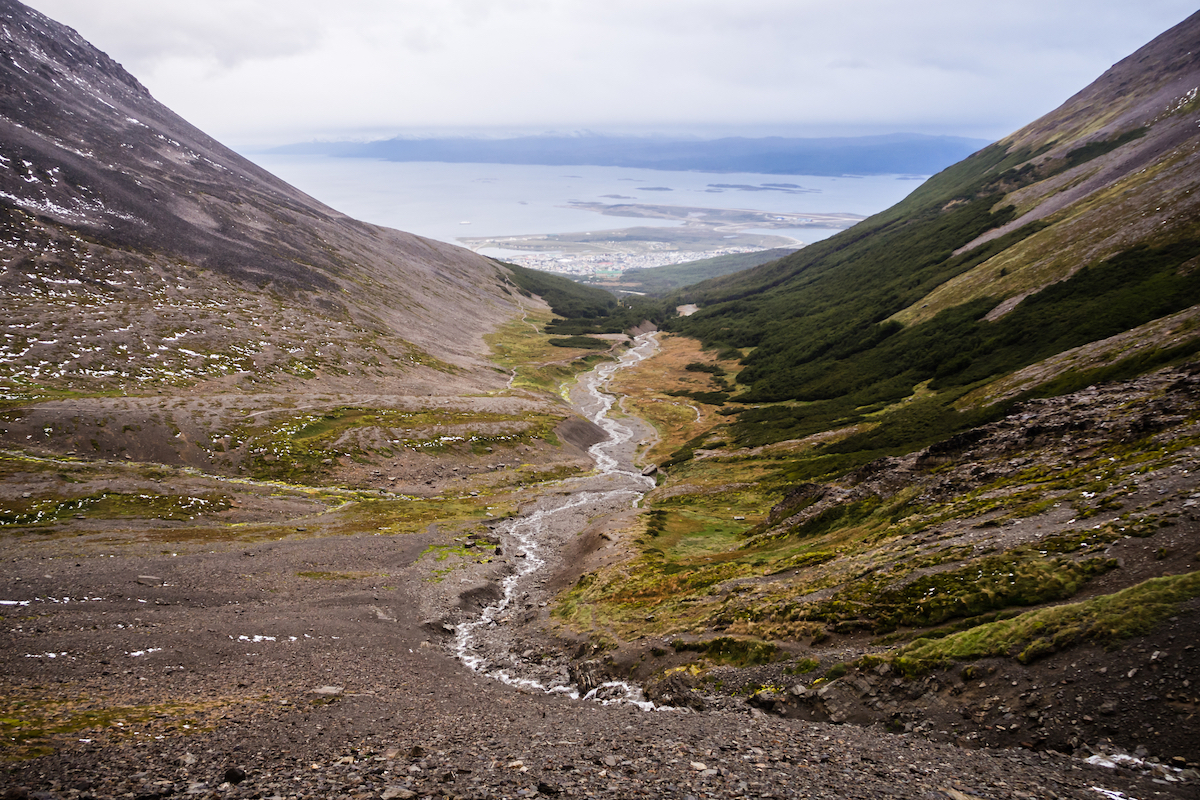
One of the most testing and rewarding things to do in Ushuaia is hiking to the top of Martial Glacier. A winding trail meanders from the west of the city, climbing higher and higher up the hillside to the looming glacier.
While it can be quite a gruelling hike up to the glacier, the stunning views once you arrive at the top make the breathless climb all the more worth it.
Depending on the weather conditions, the climb may require you to wear snowshoes or even crampons, which gives you an indication of the effort involved in getting to the top. All in all, the climb will take around an hour and a half but can take longer if you are stopping for photo opportunities or for a few breaks to catch your breath.
Know before you go:
- Location – Glaciar Martial is located northwest of the city, with the trail starting in from the Luis Fernando Martial road.
- Cost – Free.
- Opening hours – 24 hours.
- Time needed – Around 3-4 hours to make the climb up and down.
- Getting there – Being so close to the city, it is possible to walk to the start of the trail.
13. Stay in a Luxurious Log Cabin in The Mountains
At the beginning of the Glaciar Martial trail is a luxurious log cabin hotel that goes by Hotel De Montaña Cumbres del Martial. The extreme beauty of the surrounding mountains, valleys and glaciers that can be found in this area are far better appreciated when you stay at one of these luxury log cabin hotels.
Cabins at the Hotel De Montaña Cumbres del Martial are divided into three different types; standard, luxury and superior. Standard cabins are named after the local tea house products, including Raspberry, Calafate, Rhubarb, and Chocolate. Each of these cabins comes with its own private balcony, perfect for soaking in the stunning surroundings.
Luxury cabins are named after wines, including Sauvignon Blanc, Chardonnay, Merlot and of course, the glorious Malbec! (That bad boy should have its own village!)
These huge cabins stretch over two floors and are woven into the mountain forests, giving them a luxurious feel of being enveloped within the landscape. The super cabin has everything you would want from any domestic setting, including kitchens, bathrooms and best of all a private space with a two-person Jacuzzi overlooking the Beagle Channel.
Know before you go:
- Location – Hotel De Montaña Cumbres del Martial is located on the northwest side of the city, along the route to Martial Glacier.
- Cost – Cabins start from around AR$ 27,000 per night.
- Opening hours – Check-in at 4 pm. Check out at 10 am.
- Time needed – This one’s up to you!
- Getting there – A short taxi ride can take you straight to the mountain cabin hotel.
14. Hike Glacier Vinciguerra
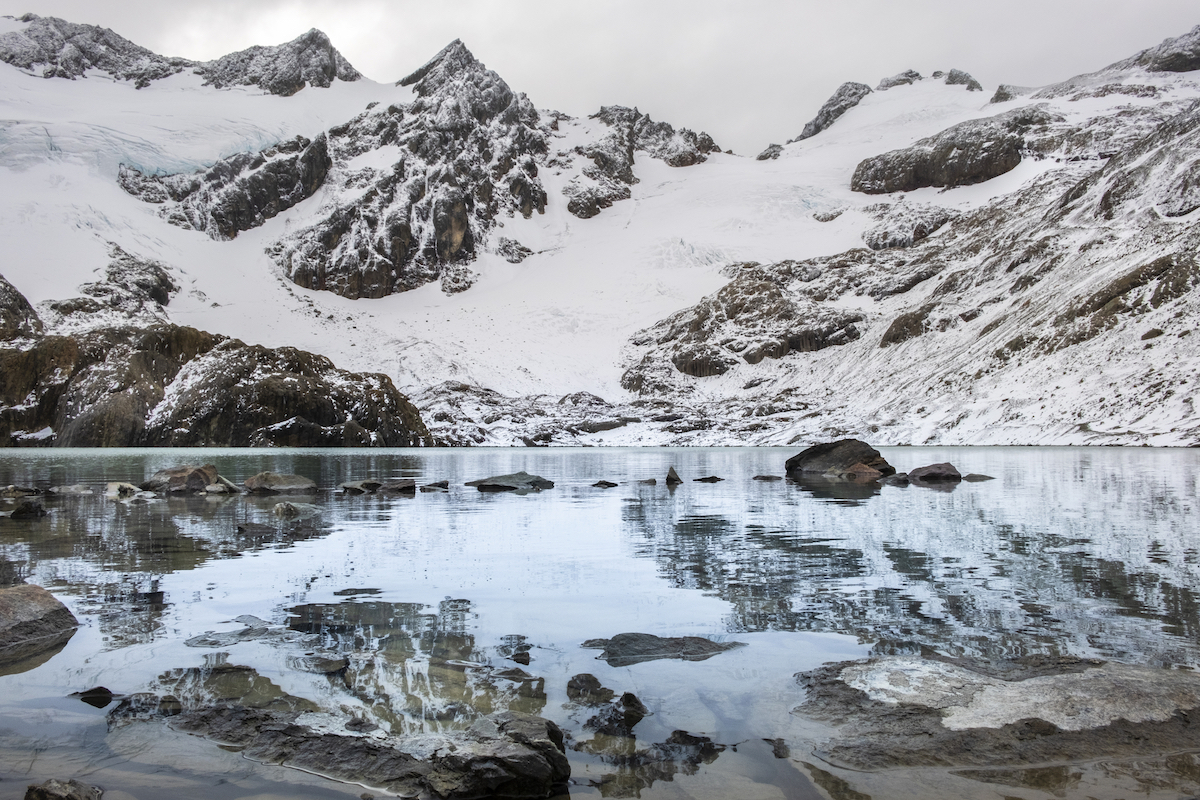
Even further north of the city is one of the region’s largest glaciers, Glacier Vinciguerra. Hiking to and on Glacier Vinciguerra is one of the most challenging things you can do in Ushuaia but simultaneously one of the most rewarding.
The hike will lead you through even more of the region’s most spectacular scenery, including woods, creeks, lakes and of course the glacier itself. Joining a guided tour of the hike will not only keep you safe but also give you an unmissable chance to learn about the making of the glacier’s formation and the earth-moving history of Glacier Vinciguerra.
Know before you go:
- Location – The glacier is located north of the city, high up in the mountain valleys.
- Cost – Joining a hiking tour will set you back around AR$ 5,000.
- Opening hours – Hikes usually begin in the morning, starting around 9 am.
- Time needed – The hike up and down will take most of the day, totalling around seven hours.
- Getting there – As part of the tour, you will be collected from your accommodation, so no need to worry about getting there yourself.
15. The Time Capsule
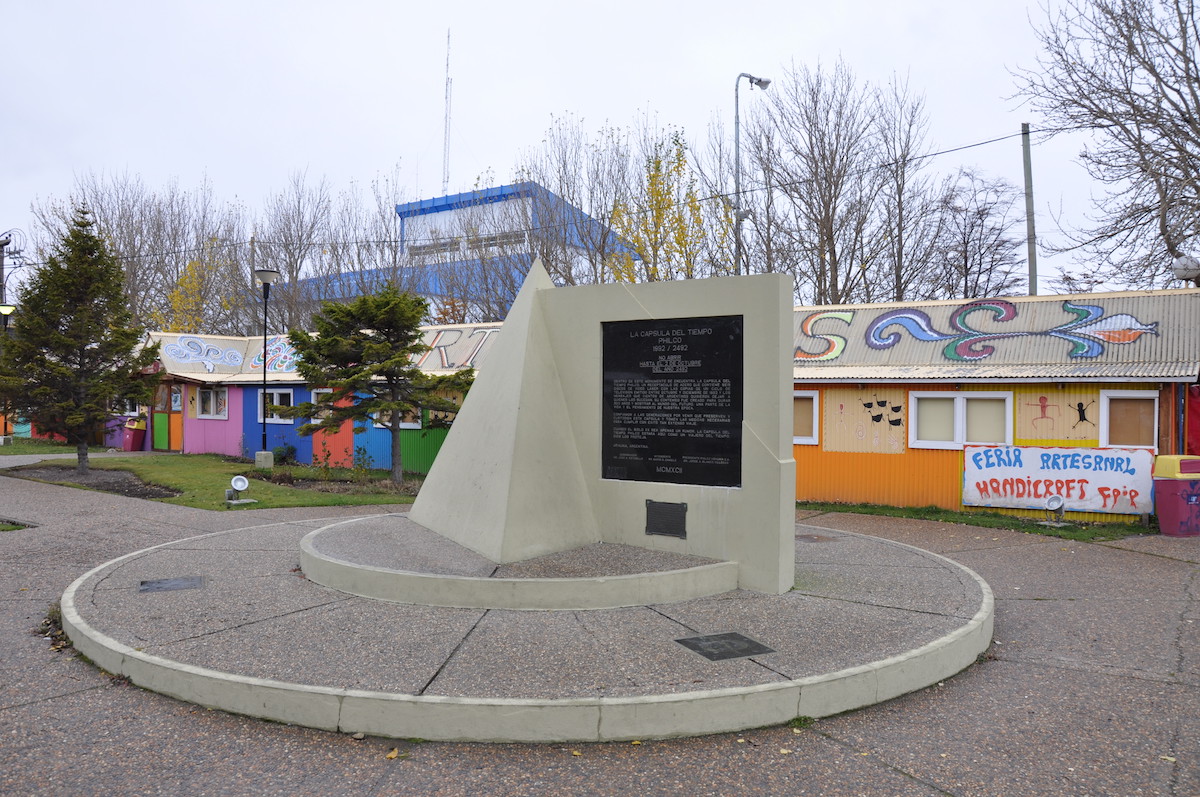
At the centre of Ushuaia, close to the dock is a small square, housing a number of interesting landmarks and points of interest. The most engaging of these is the time capsule of Ushuaia.
In 1992, a concrete time capsule was buried here, containing hundreds of letters from all over Argentina and a number of laser discs of television shows from the 1990s. As the time capsule plaque states, it will not be opened until the year 2492, a date chosen as it marks one thousand years after the arrival of Columbus in the Americas.
A bronze statue on a green concrete stand is known as “Ona en acecho”, ‘The Stalking Ona’. It depicts a figure kneeling on a rock, and was intended as a homage to the Indigenous tribes that founded the former village that would go on to become modern Ushuaia.
Know before you go:
- Location – The time capsule is located close to the cites docks and the Museo del Fin del Mundo.
- Cost – Free
- Opening hours – 24 hours.
- Time needed – You’ll only need a few minutes to take a look around and read the plaques.
- Getting there – Being in the centre of town, it is easy enough to walk to the time capsule.
16. Endulge Your Sweet Tooth at Chocolateria Edelweiss
Chocolate lovers should not pass up the chance to visit Chocolateria Edelweiss in Ushuaia. This independent artisan chocolate shop has undeniable connections to German settlers in South America and the techniques of European chocolate making.
In a small piece of chocolate heaven, you’ll find everything from hand-made chocolates to kits with all you could need to create these sweet treats at home. As well as the standard chocolates, the shop also sells gift packs and selection boxes, making it an ideal place to grab a gift for someone back home.
Know before you go:
- Location – The chocolate shop is located in the centre of the city, along Luis Piedrabuena Road.
- Cost – Chocolate goods come in different shapes and sizes, from very affordable to luxuriously expensive.
- Opening hours – 10 am – 1 pm and 4 pm to 8:30 pm.
- Time needed – It will only take a short time to wander around the shop.
- Getting there – Being in the centre of town, it is easy enough to walk to the shop from your accommodation.
17. Lunch At La Cabana Casa De Té
La Cabana Casa De Té café is one of the most unusual and beautifully located places to eat in the city. Perched on a winding mountain road that leads up to the hillside glaciers, this charming cafe is one of the best places to have lunch after a day’s exploring the mountains.
More of a tea shop than a place to eat, the cafe sells a huge range of tea-drinking paraphernalia, perfect as a keepsake from your time here.
Selling a wide range of food, both savoury and sweet, La Cabana Casa De Te is an oasis of home comforts and hospitality in an otherwise isolated section of the road. Stepping in over the threshold of La Cabana Casa De Te brings a warm feeling of homeliness and makes you want to stay for longer than it takes to drink a warming cup of tea.
Know before you go:
- Location – The cafe is located on the mountain road of Luis Fernando Martial, northwest of the city.
- Cost – Drinks and food are very affordable, starting from around AR$300.
- Opening hours – 9 am – 8 pm.
- Time needed – Take around an hour to soak up the atmosphere and enjoy a lunch break here.
- Getting there – Either pop in on your way to hiking the glacier or grab a short taxi ride up to the cafe.
18. Drink Patagonian Wine
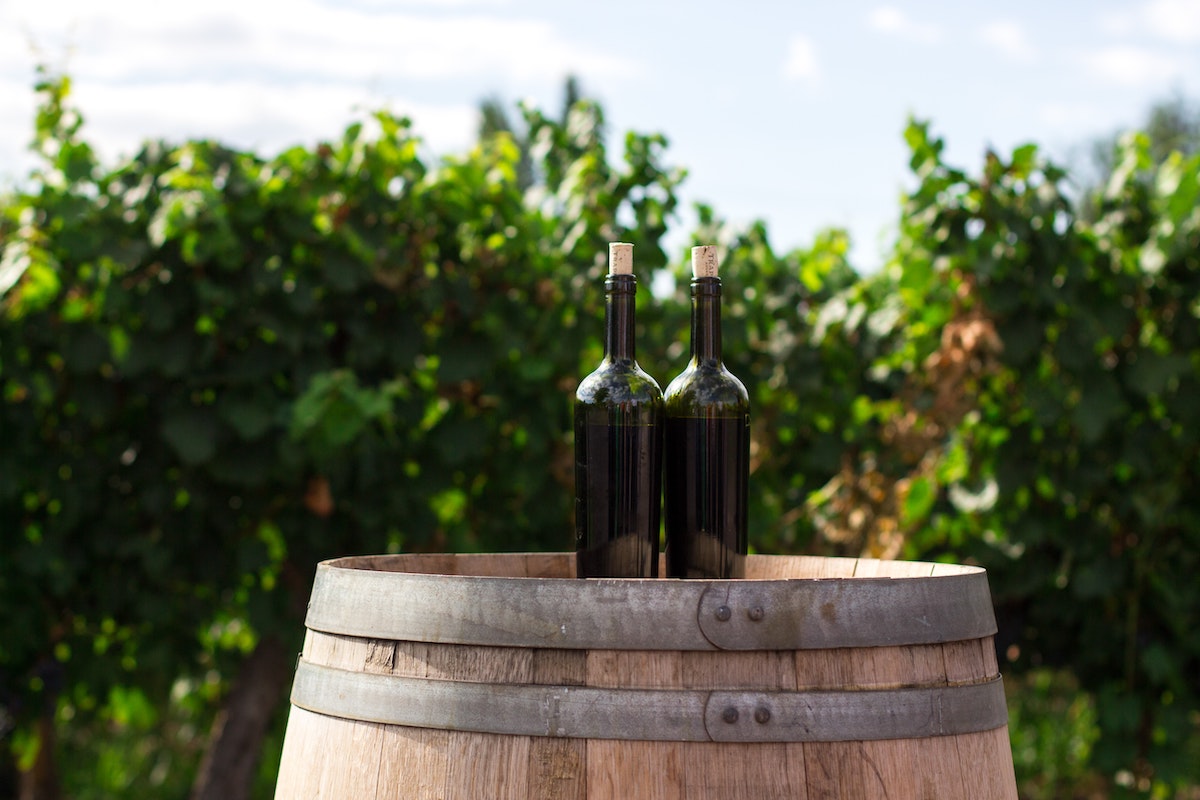
Wine from Argentina and Chile is considered to be, by many, some of the best in the world, competing with other wine-producing giants such as Italy, California, Spain (and last but not least Oz, most of my road trip in Australia was delayed due to making extra stops to enjoy their fine wine).
It was once the case that most of Argentina’s wine production took place in the Mendoza and Salta regions.
However, in recent years, wine manufacturing in Patagonia has begun to flourish, especially in the regions of Río Negro and Neuquen. Many of these are small, family-run wineries; local businesses that will be passed down the generations for years to come.
If you’re on the lookout for things to do in Ushuaia that involve sampling a few glasses of this sought-after Patagonia wine, then the Lakuma wine bar and shop is the perfect place to do so. Located in the centre of town, Lakuma is a small but inviting bar, where you can sample a wide range of Patagonian wines.
It is also not uncommon for the bar to play host to a live band, ideal for an evening’s entertainment.
Know before you go:
- Location – Located along the Commandante Luis Piedrabuena, close to the centre of Ushuaia.
- Cost – Wine samples start from as little as AR$120 and can rise into the hundreds depending on your tipple of choice.
- Opening hours – Monday to Friday 5 pm – 9 pm, Saturday 5 pm – 10 pm. Closed on Sundays.
- Time needed – A good few hours in the evening is perfect for sampling the wines and listening to the live shows.
- Getting there – A short taxi ride will get you to Lakuma, a little outside the most commercial area.
19. Visit Tolhuin Town
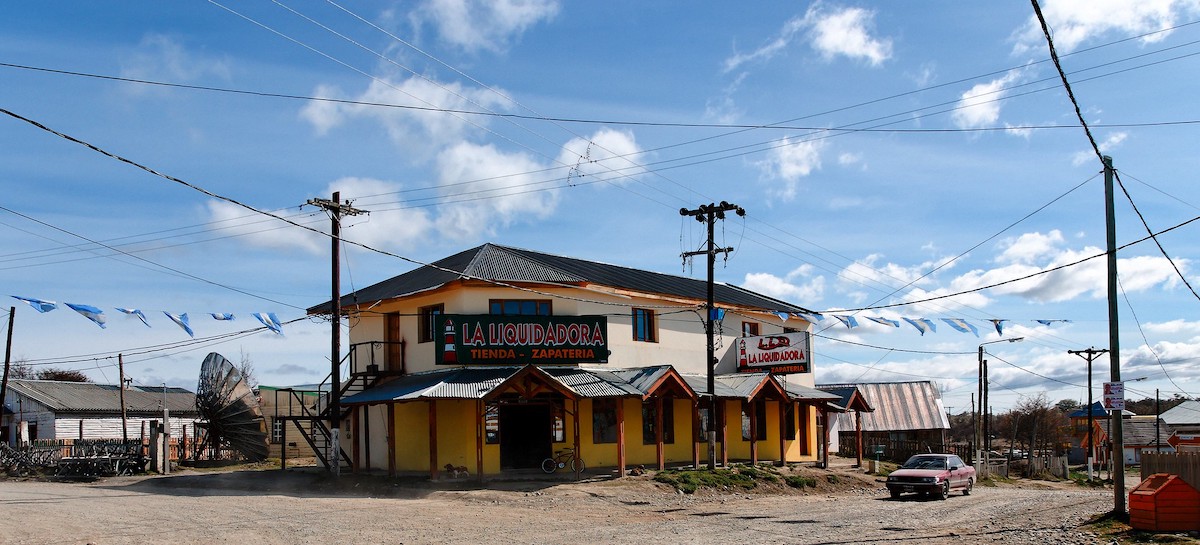
Around sixty-two miles north of Ushuaia is the charming town of Tolhuin. While it is often considered to be the gateway to the more rugged mountainous regions, the town itself is well worth a few hours of your time.
Tolhuin’s location on the edge of the mountains and the plains of Tierra del Fuego creates a microclimate very different from the other cities in the province. This, combined with the beautiful surrounding forests and the eastern shores of Lake Fagnano make Tolhuin an almost magical place to visit.
Swapping the city of Ushuaia for the relatively small town of Tolhuin is a great way to spend a day when things to do in Ushuaia become sparse.
Know before you go:
- Location – Tolhuin is located 62 miles northeast of Ushuaia, along the main Route 3 highway.
- Cost – Around AR$400 – AR$500 for a bus each way.
- Opening hours – Regular buses run between the city and town every day.
- Time needed – With around 3 and a half hours of travelling there and back, it’s best to give yourself most of the day to visit Tolhuin Town.
- Getting there – Numerous buses leave the centre of Ushuaia, travelling along Route 3, with the first stop often being Tolhuin Town.
20. Visit The Maritime Museum and Jail
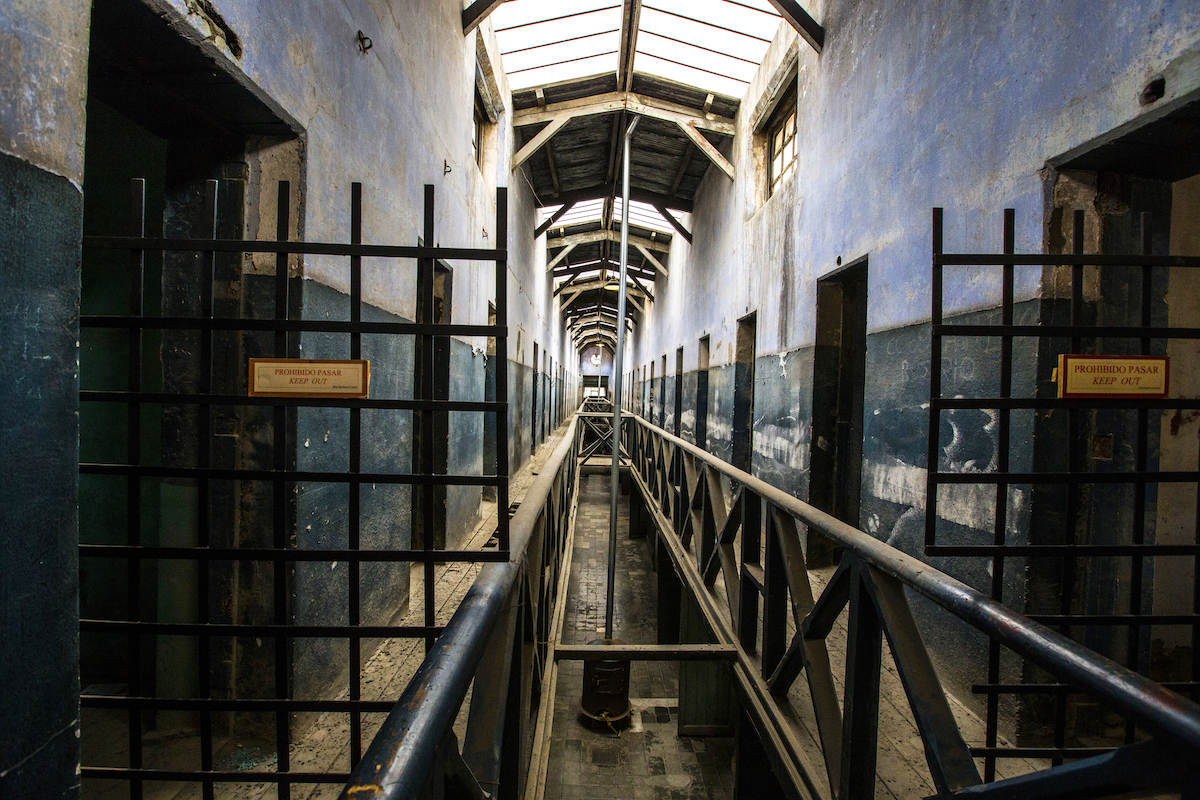
The history of Ushuaia is firmly intertwined with its penal colony and subsequent jail. One of the first and only things in the area other than the small village, Ushuaia’s prison firmly defined much of the area for decades and is seen as the landmark of Ushuaia.
After the prison was closed in the late 1940s the location was converted into an Argentine naval base – famously being the launching port for the subsequent Falklands War with Great Britain in 1982.
You can dive back through the years and see what this prison was once like and how it came to be with a visit to the Museo Marítimo y del Presidio de Ushuaia or in English, the Maritime Museum and Jail.
The prison is preserved in all its macabre glory, allowing you to walk its halls and visit the cells. With mannequins replacing prisoners and prison guards, the whole prison comes back to life.
You can also learn about the history of the prison through numerous exhibitions. Aside from the prison, there is a small section that highlights the maritime history of this region, including exhibitions showcasing historical ships and ones of the Falklands conflict (from the Argentine perspective of course).
Know before you go:
- Location – The museum is located in the far east of the city, close to the docks.
- Cost – AR$400 entry fee.
- Opening hours – 2 pm – 8 pm.
- Time needed – You won’t need more than two hours to visit the museum.
- Getting there – It’s more than possible to walk to the museum, being so close to the city’s centre.
21. Send a Postcard From The End Of The World
To truly stamp your mark on your time spent in the city at the end of the world, why not send a postcard from one of the world’s most southern post offices? It’s easy enough to buy a postcard from one of the many shops in town, each with its own little spin on Ushuaia’s beautiful landscapes or landmarks.
Head to the Correo Argentino post office along San Marin Avenue, where you can send your postcard to the other side of the world. Depending on the time of year, you may even beat your postcard home, showing you just how far your postcard is travelling.
Know before you go:
- Location – The post office is located on the corner of San Marin Avenue.
- Cost – AR$200 should do to buy a postcard and pay for the stamp.
- Opening hours – The post office opens between the hours of 9 am – 3:30 pm.
- Time needed – Give yourself 20 minutes to deal with the often long post office queues.
- Getting there – The post office is in the city’s centre and is easily walkable from most central accommodations.
22. Get Your Ushuaia Stamp on Your Passport
I always do this – whenever there is a chance to get a unique, non-official national stamp in my passport; I do it. Sometimes to my deterrent (as it’s not efficient when you are travelling long term and can run out).
You have to make sure that you have enough space for your plans though. Don’t blame me, it’s only a suggestion!
Know before you go:
Same place as above, the post office!
23. Book a Discounted, Last-Minute Expedition To Antarctica?

To add a whole new level of adventure to your trip, once you have run out of things to do in Ushuaia, you may want to jump on a last-minute expedition to Antarctica. Many trips and cruises regularly set sail from Ushuaia, the city being roughly a 48-hour boat journey to the world’s coldest continent.
In any other situation, you would need to pre-book these expeditions well in advance of the trip, but most likely you will be paying full price. And, let me tell you, a cruise to Antarctica doesn’t come cheap. (My wallet still weeps).
However, as you are already in Ushuaia, you’ll find yourself at a rather tempting advantage. If you have the time to wait around and relax in the city, there may come a chance when a space opens up on a trip to Antarctica.
Booking it last minute like this means you can get it for a far cheaper price than if you were to book it months in advance. A little patience goes a long way.
Know before you go:
- Location – Only 620 miles separate from Ushuaia from Antarctica.
- Cost – Allegedly you pay around USD$ $3,000 for the journey or even less but I’m calling shenanigans on this one as I paid $14,000 and it hurts! Good luck to you though.
- Opening hours – N/A
- Time needed – Expeditions usually last around a week.
- Getting there – Boats leave the port of Ushuaia regularly. Checking local tours will keep you updated on spaces available.
I travelled solo from the north of Colombia aaaaaall the way down to Ushuaia, covering the South American continent overland (no flights). It was a pretty hardcore trip and I was admittedly a little tired and concerned that Ushuaia’s “end of the world” quirks might not do it for me…
…how wrong I was. There are plenty of things to do in Ushuaia (as demonstrated above) even if parts of it are that of a gimmicky tourist city, if anything it lifted my energy levels and allowed me to reenergize for the next leg of my journey.
Best Time of Year To Visit Ushuaia
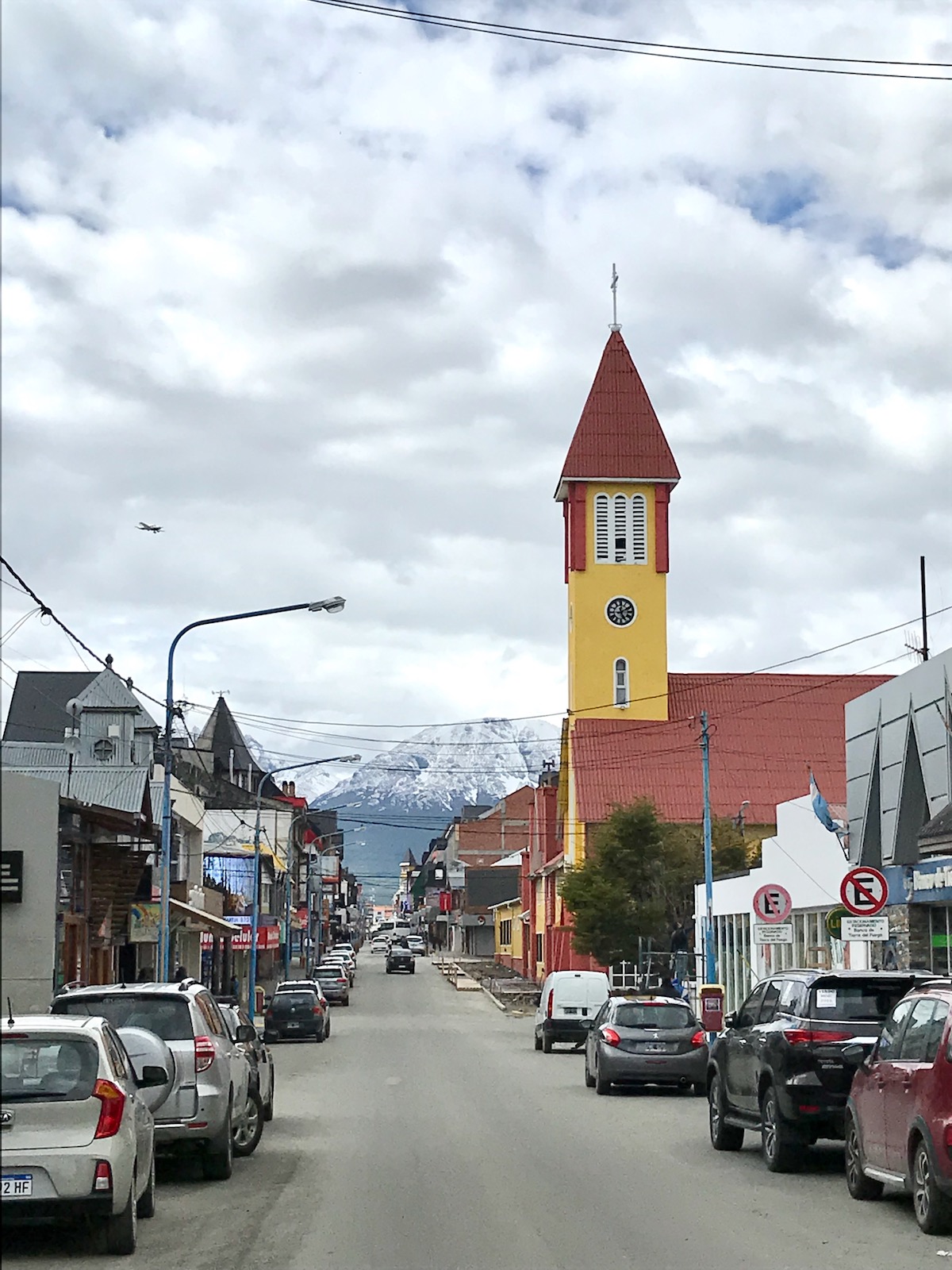
In the southern hemisphere, where Ushuaia lies, the summer months run throughout December, January and February, with a peak temperature of around 15°C. All year round Ushuaia has relatively moody weather, with an average of 146 days of precipitation each year and more than 200 cloudy days annually.
Taking this into consideration, the best time of the year to visit Ushuaia is almost always during the summer months. During this time, the humidity falls as rain, rather than snow, and important travel elements including flights and boat trips are less affected by extreme weather.
During the winter months, travel can often be called off, and even delayed by several weeks due to severe weather conditions. This includes disabling storms or larger icebergs that block the narrow channels that separate the islands of the archipelago.
If you’re heading to Ushuaia to tick a few must-see animals off your list, then you’ll also want to visit during summer. Native wildlife tends to be more active during these warmer months, giving you a much better chance of spotting them out in the wild.
Ushuaia isn’t a crowded place by any stretch of the imagination, but if you are someone who prefers to travel when the crowds (and prices) are at their lowest, then you might want to consider planning your visit to coincide with the shoulder season.
As a general rule of thumb, shoulder season runs on either side of peak season. In Ushuaia’s case, that’ll be during November or March. Temperatures are still a comfortable 12°C, and while the chances of extreme weather are a little higher, it’s very unlikely that it will disrupt your travel plans and all of the best things to do in Ushuaia, Argentina’s quirky most southern city will still be at your disposal.

